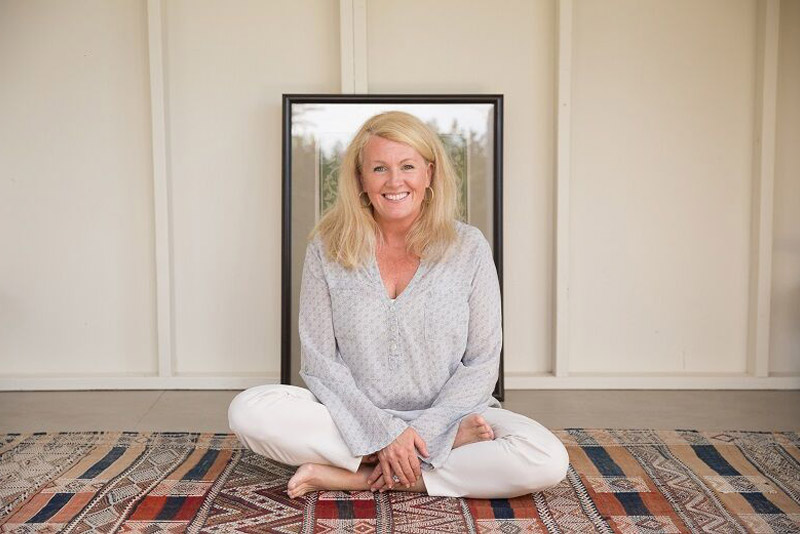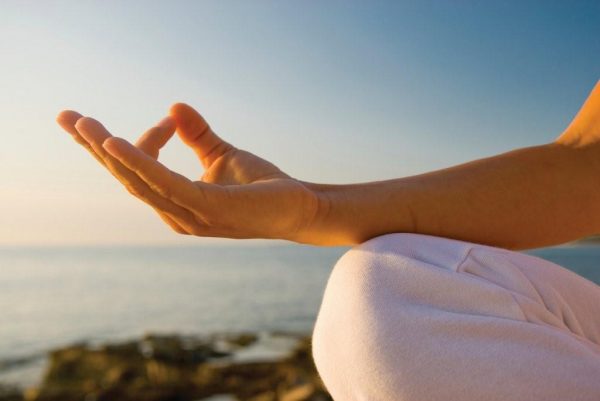Be Powerful – Sharpen Your Attention

Be Powerful – Sharpen Your Attention
Every living being, from people and animals to plants, and even molecules of water, respond to attention.
Consider this: when you offer your unconditioned, gentle attention to someone or something, you are sending a very powerful message: “I see you. I hear you. I love you.” Your attention – given freely – not only creates a deeper connection between you and everything else, but it can also enliven your relationship to yourself, your body, your passions, your projects, and ultimately, your entire life.
Unfortunately, many of us squander our attention without even recognizing its value and its power. That’s because attention is so subtle. It can easily be overshadowed by competing interests and distractions.
We can become mindless, rather than mindful.
Technology and the media hijack your attention, often without your permission. Your mental musings, including your compulsions and obsessions, can also distract you from what is important to you, too. Some of us have the habit of paying continual partial attention: not truly engaged, but kind of half-listening, half distracted, or easily thrown off focus because of the demands from to-do lists.
If you’re not aware that you’re distracted, then your connection with the people and causes you care most deeply about will suffer.
But you can change that.
Have you ever heard the phrase, “Where your attention goes, energy flows”? It’s true. Your attention is a powerful currency. After all you pay attention.
In fact, your attention is your superpower. You have the ability to take advantage of this superpower by training yourself to pay attention on purpose. And when you do, you learn the effect of paying attention to what truly matters to you, and this can transform your life. Remember, your attention enlivens what it is directed toward.
Notice what literally captures your attention.
Pay attention to your attention and become more intimate with this powerful force. Ask yourself “What am I paying attention to? Is it something that is happening now? The activity I am engaged in? Or, am I lost in a dream world of the past or future? Or is my attention being sidetracked by a personal obsession or compulsive thought?
Uplevel your mindfulness muscle.
A sure-fire way to reclaim the currency of your attention and how you focus it is through the practice of meditation, specifically mindfulness meditation. It is a simple daily practice that can strengthen your attention muscle and help you deal with distractions so you can take back control of your attention.
Mindfulness meditation is something everyone can do. You don’t need a special form of concentration or a particular belief system. In fact, it is your birthright to be able to meditate.
In order to do it, you need these three things:
1. Your resolve to do the practice, 2. gentle, nonjudgmental attention, and 3. a focal point for your attention such as a sound, sensation, or visual focus. Experiment and find a practice that feels most natural to you. You might also check out the 5 Essentials for a Successful Meditation.
Each of the following meditations has a different focus and each requires your natural, gentle attention:
- Attention to Breath: Bring your attention to the natural rhythm of your breath. Your breath is an anchor to this present moment. This is a go-to mindfulness practice. Try it now. Feel your breath as it moves in and out of your body. Can you hear the sound of the breath? Notice the pauses between each breath, too. Don’t try to control or regulate your breathing. It’s okay if you get distracted, and when you realize you’re “off topic”, simply refocus on your breath again. Remember, this is training.
- Attention to a Sound: You can listen to a sound in nature such as the wind in the trees, a bird song, or the ebb and flow of the waves in the ocean. Of, you can focus on a mantra – a word or phrase – that you repeat silently to yourself or out loud. Experiment with the word “one,” “om”, or “amen.” Or, you can focus on numbers too as you silently count your breaths (Inhale-1, exhale-2, inhale-3, exhale-4, inhale-5, and so on.) With a sound meditation, you’ll focus on the sound, such as the sound of the word, rather than the meaning of the word. When you lose track of the word or the sound, return your attention to it, again and again. In the case of counting, start again at one. And, be kind to yourself.
- Attention to a Sensation: Bring your attention to the sensations of your body. You can scan your body starting at the crown of your head. Notice the physical sensations and relax. Then, mindfully and slowly, work your way down your body, noticing sensations in each area you rest your attention on. You might feel coolness, warmth, lightness, heaviness, tingling, numbness, or something else. You might feel the air on your skin or your feet on the floor. Or where your hands meet your lap. If you notice you are telling yourself a story about this or that part of your body or sensation, return your attention to the sensation itself rather than an interpretation of it.
- Attention to a Visual Focus: Softly focus your gaze on an object. You can choose a candle flame, a star in the night sky, or even a flower. After gazing on the object for some time, close your eyes and begin to visualize it in your mind. When the image fades from your awareness, then open your eyes and direct your gaze to the object again. If your mind wanders to a thought or a story during the practice, open your eyes and return to observing the object without judgment, interpretation, or labels.
- Attention to an Emotion: You can focus on cultivating or examining a positive emotion such as gratitude, appreciation, or kindness. Do this by bringing to your heart and mind someone or something you are thankful for or care deeply about. Get a sense of your feelings for him or her. You can also focus on someone who truly loves you and immerse yourself in that feeling of being loved. While you do this, bring your attention to your heart area. Remember, where your attention goes, energy flows.
Here are answers to the basic questions new meditators frequently ask when starting a new practice:
What time of day should I meditate? The body loves rhythm, so you can create a new one by setting aside a period of time each day to meditate. The two best times to meditate are when you first wake up in the morning, and again between work and dinner – what I call “happy hour.” Before you start, put your mobile phone on airplane mode, and tell those around you that you will be otherwise occupied so you won’t be disturbed. It’s ideal to meditate on an empty stomach, and with a resting heart rate. Because meditation can increase your alertness, it’s best to finish meditating at least three hours before bedtime so it doesn’t interfere with your sleep.
Where and how should I sit? Find a quiet place free of distractions, one that you can return to at the same time each day. As you become more experienced, you will be able to meditate anywhere – at work, on the subway, at the doctor’s office, even in your car. Though there are some standing meditations, most are done sitting down. Sit upright in a comfortable position in a chair with your feet on the floor, or, if you can, you can sit on a floor cushion, cross-legged. Close your eyes, and get comfortable. Remain relatively still throughout the practice however, there is no need to be rigid or stiff or uncomfortable.
My eyes are closed, now what should I do next? Bring your gentle attention to the focus you have chosen for the meditation, and if your mind wanders, gently bring your attention back to your focus without judgment. Welcome everything, and resist nothing. Let go of expectations, too: don’t wait for something magical to happen, instead, just do it.
How long should I meditate for? Decide ahead of time how long the meditation period will be and stick with it the entire time. Start with five or 10 minutes and, if you like, you can increase your meditation time up to 30 minutes twice a day, Any amount will be beneficial, but to build self-discipline, it’s important to stick to the amount of time you commit to once you start your session. This resolve will help to train your attention. Use a watch, a meditation mobile app, or the vibrate mode on your phone to let you know when your time is up.
How do I end my meditation session? Take your time coming out of meditation. Give yourself a few deep breaths and become aware of the space and the sounds around you. Begin to gently stretch your body and slowly open your eyes, just as you would coming out of a restful night’s sleep. Take at least two minutes before you return to activity.
Ultimately, being more mindful is a practice that will help you to live a peaceful, powerful, purposeful life.
You’ll be more focused, present, and engaged in what is truly important to you. It will become easier to pay attention to and savor your life, including the relationships and experiences you are engaged in. And, as each new moment unfolds, you’ll be attentive to that which calls your spirit into action.
And, for a bonus point, you can pay attention to the source of your attention.
Take a moment to pay attention to your attention right now. Where does it arise from? Who or what is it that is looking through your eyes? I’ll leave you with these questions.
Photo by Kevin Mueller on Unsplash
Sarah McLean
Sarah McLean is an acclaimed teacher and thought leader who is determined to create more peace on this planet by helping people wake up to the wonder and beauty of their lives and the world around them through the practices of meditation and mindfulness. She inspires audiences everywhere blending the spirit of Zen wisdom with Vedic knowledge and self-inquiry. She helps demystify meditation and makes it accessible to anyone. It was over 30 years ago when she began her daily meditation practice, and moved in to a Transcendental Meditation community. There, she received advanced training in meditation and studied Ayurveda. Since 1993, when she became the education director for Deepak Chopra’s Center for Mind Body Health, she's been teaching contemplative practices and mind/body health. In 1997, she went to India to live in a traditional ashram in India, When she returned to the States, spent two years as a resident trainee in a Zen Buddhist monastery. She fell in love with Self-inquiry and served as the director of Byron Katie's School for the Work. In 2012, she founded the McLean Meditation Institute, home of the Meditation Teacher Academy which certifies meditation and mindfulness teachers through its 300-hour teacher training program. Her bestseller, Soul-Centered: Transform Your Life in 8 Weeks with Meditation, and her most recent book, The Power of Attention: Awakening to Love have received rave reviews. She now lives in Santa Barbara, California where she trains meditation teachers and offers online classes and lives a life she loves.






